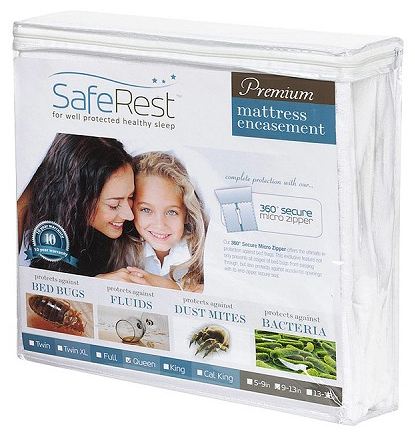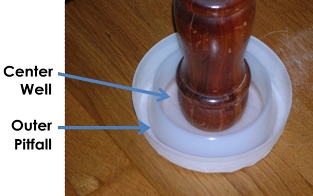Bed bug prevention is the crucial thing that will save you and your family from living out the nightmare of a bed bug infestation. The key issue at this point is…
How do you get bed bugs?
Read the full article linked to above to get all the details. Here is a quick overview though:
- Bed bugs already exist where you live or are staying but weren’t detected previously or weren’t dealt with properly.
- Bed bugs came in through adjacent units in a multi-unit dwelling (condo, apartment, dorm).
- Bed bugs hitched a ride from the outside on people or objects brought into the dwelling.
The first two situations above are bad because by the time you find out—it’s too late to be proactive. All you can do is respond. A bed bugs exterminator is the best bet at this point. Keep in mind that in most areas, the property manager has a legal responsibility to hire a pest control professional to handle a bed bug infestation.
The third situation though is a different case. In this situation, you have more control and can be proactive.
Proactive Bed Bug Prevention
The best part about proactive bed bug prevention is that it is mostly a matter of simple knowledge and effort. You don’t need any special knowledge or tools. Just keep the following things in mind and apply that knowledge when necessary.
Create a strong defense.
Laundering your bedding with hot water and drying it with high heat will kill bed bugs. But what about the parts of the bed you can’t throw in the wash?
Bed bug encasements are a great way to keep your mattress, box spring and pillows bed bug free. They won’t prevent bed bugs. But what they can do is prevent these areas of the bed from being infested. They take away places for bed bugs to hide.
If you have a bed with legs, you can also put the legs in Climbup Interceptors. These little bowls are made in such a way that bed bugs get stuck in them — they climb into the bowls but can’t make it up the legs of the bed.
Climbup Interceptors are actually designed for bed bug detection. But they take away one path bed bugs have to get into your bed. People report having good luck using them for protection purposes.
You also need to keep the bed isolated in other ways. Make sure to pull the bed away from the wall. Move nightstands so that they don’t touch any part of the bed or bedding. Don’t let bedding touch the floor. And don’t put things on the bed (clothes, bags, shoes).
These are not solutions to a bed bug infestation. But they can help protect you, especially from getting bed bug bites.
Have an early warning system.
If bed bugs manage to get in your home, you might not notice right away. Even when you get bit by a bed but it can sometimes take a full nine for bed bug bite symptoms to show up. Meanwhile, an infestation is quietly building in the background. This is why it helps to have an early warning system.
You can use Climbup Interceptors for this. The interception method is good. I don’t want to knock it at all. But the thing to keep in mind is that it is a passive method. It relies on bed bugs trying to enter the bed. And it takes time to work.
There is a new product on the market called the Bedbug Beacon that works a little differently. It emits CO2 to attract bed bugs and trap them. The manufacturer claims it works in minutes, actively drawing bed bugs out of hiding. This is a great tool to detect bed bugs before an infestation gets too big. It is reasonably priced at about 50 bucks.
Protect yourself while traveling.
Bed bug prevention for travel consists of a few easy actions you can take:
- Research hotels before you book.
- Inspect your room before you settle in.
- Protect your luggage, clothes and belongings.
- Safely unpack and treat luggage and clothes when returning.
Read Bed Bug Protection Tips for Travel for more detail.
Check periodically for signs of bed bugs in your home.
Do a quick check of your home on a regular basis. Learn how to recognize the signs of bed bugs so you can spot an infestation early and take action.
Be extremely careful when buying used home items.
People often don’t consider bed bugs before bringing second hand items into the home. Consider that people often acquire used items in the following ways:
- Buying goods that have been returned to a store and are being sold as new.
- Receiving hand-me downs.
- Buying things from garage and tag sales.
- Buying things from flea markets.
- Taking items left curbside for free.
- Buying items through online and offline classifieds.
If you bring things into your home that you have obtained through any of the above channels, make sure you check everything thoroughly. It may even pay to isolate those things in storage somewhere for a bit until you can inspect them and possibly treat them.
Don’t let bed bug infested items fall into the hands of unsuspecting people.
Sometimes when people get rid of bed bug infested goods, unsuspecting people pick them up and bring them into their homes. When you dispose of something like an infested boxspring or mattress, you can deface it to make it unappealing to people that might bring home trash/curbside items. Clearly mark items you are getting rid so that it is clear they are infested.
This at least gives the other party a fair warning.
Spread the Word
In addition, you can help spread the word to others. Bed bug awareness is a big factor in the current bed bug resurgence. People don’t know much about bed bugs. They don’t know that they should protect themselves, much less how. In fact, some people don’t think bed bugs are real. They’re very real of course.
The more people that are aware, the more likely it is that all of us can avoid bed bugs.

